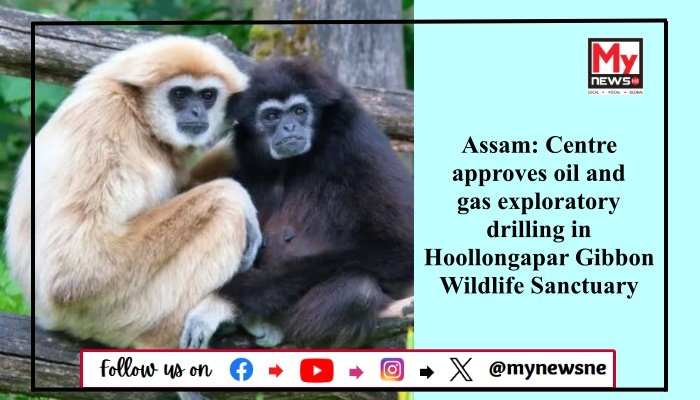Assam: Centre Clears Oil and Gas Exploration Near Hoollongapar Gibbon Sanctuary
Assam: The Centre’s wildlife panel has given the green light for oil and gas exploration within the eco-sensitive zone (ESZ) of the Hoollongapar Gibbon Wildlife Sanctuary in Assam’s Jorhat district.
The decision was approved by the Standing Committee of the National Board for Wildlife (NBWL), chaired by Union Environment Minister Bhupender Yadav, during a meeting held on December 21. The proposal, submitted by Vedanta Group’s Cairn Oil & Gas, had earlier received in-principle clearance from the Forest Advisory Committee in August last year.
Assam’s principal chief conservator of forests (wildlife) and chief wildlife warden had recommended the project in August 2023, citing its significance for “national interest.” Following this, an inspection team comprising officials from the Union Environment Ministry, the Wildlife Institute of India (WII), and the Assam Forest Department visited the project site on November 15 to assess potential impacts.
The inspection report highlighted that exploratory drilling would cause minimal environmental damage but emphasized that commercial drilling would not be permitted. Vedanta Group has provided a written assurance that no commercial drilling will be conducted within the ESZ. Instead, the exploration aims solely to identify hydrocarbon reserves, with any extraction to be carried out outside the protected zone, should reserves be discovered.
Despite these assurances, ministry officials acknowledged concerns about the exploratory drilling being a precursor to hydrocarbon extraction, which could potentially escalate environmental risks. Additionally, the project site lies in a disputed area along the Assam-Nagaland border, where local Naga communities have asserted that no drilling will be allowed without prior approval from the Village Council and the Nagaland government.
The Hoollongapar Gibbon Wildlife Sanctuary, covering 20.98 sq km with an ESZ spanning 264.92 sq km, is home to seven primate species and serves as a critical corridor connecting the sanctuary to the Dissoi Valley Reserve Forest and forested areas in Nagaland. Conservationists have raised concerns that increased human activities, including the electrification of a railway line passing through the sanctuary, may exacerbate stress on the habitat.
While the NBWL’s approval reflects the government’s focus on balancing development and conservation, the decision has sparked debates over the long-term implications for one of Assam’s most biodiverse regions.
Read More: Manipur: Assam Rifles Vacate Camp in Kamjong District Following Mob Violence

